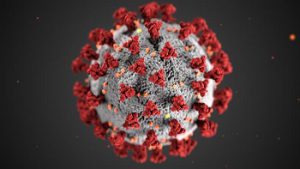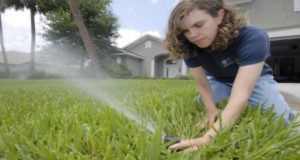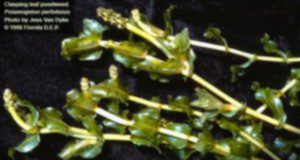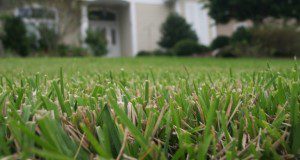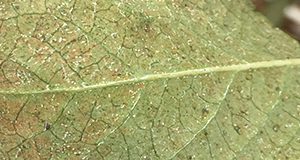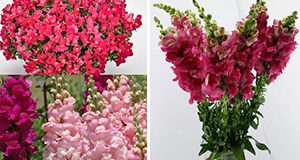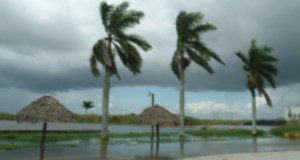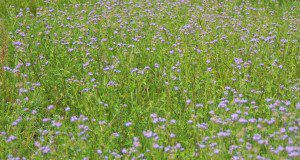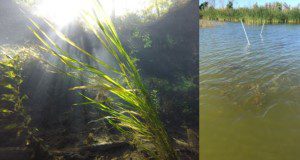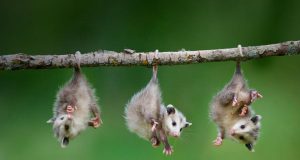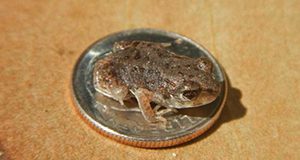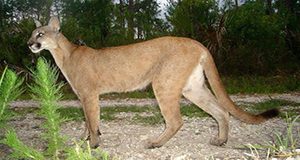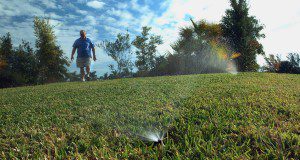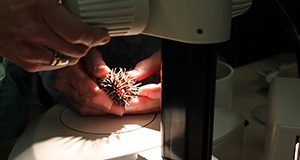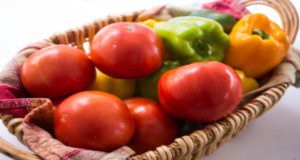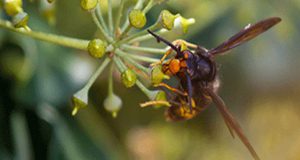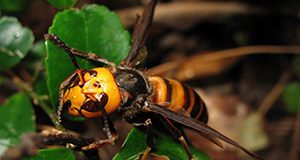This new 3-page publication of the UF/IFAS Department of Soil and Water Sciences answers common questions about the potential role of wastewater and septic systems in transmission of COVID-19. It is intended as guidance for the general public. Written by Mary G. Lusk.
https://edis.ifas.ufl.edu/ss692
Category: Environment
Best Practices for Communicating about Outdoor Residential Water Conservation
Extension communication efforts can be made more effective when following a strategic communication plan. To guide a strategic communication effort, it is imperative to have purposeful messaging along with an understanding of your target audience and communication channel. This new 3-page document, published by the UF/IFAS Department of Agricultural Education and Communication, presents a synthesis of literature highlighting best communication practices in regard to water conservation efforts. Written by Jacqueline Aenlle and Laura A. Sanagorski Warner.
https://edis.ifas.ufl.edu/wc366
Pondweeds of Florida
This new 9-page factsheet describes the defining characteristics of the eleven pondweed species that are present in Florida. It serves as a pondweed identification guide for aquatic habitat managers, lake monitors, conservationists, and plant enthusiasts, and it gives some context on each species’ life history and ecological role. Written by Christine Rohal, Laura Reynolds, Carrie Reinhardt Adams, and Charles Martin, and published by the UF/IFAS Department of Soil and Water Sciences.
https://edis.ifas.ufl.edu/ss686
Landscaping on or near Septic Drain Fields
Septic systems are common throughout most rural areas, and their care and maintenance are essential to the health of people, wildlife, livestock, agricultural commodities, and water resources. One way to ensure optimal performance of your septic system is to landscape appropriately near the drain field. The purpose of this new 3-page publication of the UF/IFAS Department of Soil and Water Sciences is to provide landscape management guidance for septic system drain fields. Information presented here will be useful for homeowners, landscape management professionals, and Extension agents who work in horticulture, natural resources, agriculture, and family services. Written by Whitney C. Elmore, William Lester, James Moll, Andrea Albertin, and Mary Lusk.
https://edis.ifas.ufl.edu/ss687
Mite Pests of Southern Highbush Blueberry in Florida
This 4-page document discusses life cycles, damage, monitoring, and management of southern red mites and false spider mites in southern highbush blueberries. Written by Oscar E. Liburd, Lorena Lopez, and Doug Phillips, and published by the UF/IFAS Entomology and Nematology Department, June 2020.
https://edis.ifas.ufl.edu/in1284
Development of a Model Mutagenesis System for Snapdragon
This 4-page document describes the advantages of snapdragon’s elegant transposon mutagenesis system and its connection to plant breeding. Written by Zhaoyuan Lian, Heqiang Huo, Sandra Wilson, and Jianjun Chen, and published by the UF/IFAS Environmental Horticulture Department, August 2020.
https://edis.ifas.ufl.edu/ep584
Climate Change and Florida: Frequently Asked Questions
Climate change is considered one of the biggest challenges facing society. As global temperatures continue to rise, we are threatened by melting ice sheets, rising sea levels, and extreme weather events. Climate change is also something that the people in south Florida live with daily. Still, the science of climate change is complicated, leaving many in the region looking for trusted information about why climate should matter to them. The purpose of this new 8-page FAQ document is to provide answers to commonly asked questions regarding climate change. The questions come from south Florida residents and municipal workers concerned with the climate outcomes to their region. The FAQ address several areas of concerns, including the basic science behind climate change, the projected impacts to residents of south Florida, and actions that individuals can take to reduce their carbon footprints. Written by Joshua Papacek, Ashley Smyth, Holly Abeels, and Alicia Betancourt, and published by the UF/IFAS Department of Soil and Water Sciences.
https://edis.ifas.ufl.edu/ss682
Biology and Management of Praxelis (Praxelis clematidea) in Ornamental Crop Production
Praxelis is a newly emerging weed species in Florida, one that Plant Protection and Quarantine (PPQ) is considering adding to the federal noxious weed list. The plant can be easily misidentified and confused with Ageratum houstonianum (bluemink) and Conoclinium coelestinum (blue mistflower) as well as several other species that have similar flower characteristics. This new 5-page article is written for green industry professionals and others to aid in the identification and management of praxelis in and around ornamental plants. Written by Yuvraj Khamare, Chris Marble, Shawn Steed, and Nathan Boyd, and published by the UF/IFAS Environmental Horticulture Department.
https://edis.ifas.ufl.edu/ep585
A Comparison of Planting Techniques for Submerged Aquatic Vegetation
Submerged aquatic vegetation has numerous benefits for aquatic ecosystems, from improving water quality to providing important habitat that supports a diverse food web. This new 6-page publication of the UF/IFAS Department of Soil and Water Sciences describes the breadth of options available to managers who wish to plant SAV at new locations. Because all methods have both benefits and drawbacks, and because all planting locations have different (often unknown) challenges for plant survival, managers may choose to try multiple methods to increase the likelihood for success. Written by Laura Reynolds, Carrie Reinhardt Adams, Enrique Latimer, Charles W. Martin, Christine Rohal, and Jodi Slater.
https://edis.ifas.ufl.edu/ss685
Bermudagrass Production in Florida
This 10-page document is primarily for Extension agents and farmers looking for detailed information about bermudagrass production in Florida, including cultivar characteristics, fertilization, and pest and disease management. Written by M. O. Wallau, J. M. B. Vendramini, and J. K. Yarborough, and published by the UF/IFAS Agronomy Department, revised May 2020.
https://edis.ifas.ufl.edu/aa200
Wildlife of Florida Factsheet: Virginia Opossum
Learn more about the Florida opossum!
The Wildlife of Florida Factsheet series was created to provide the public with a quick, accurate introduction to Florida's wildlife, including both native and invasive species. Authors Simon Fitzwilliam and Raoul Boughton hope this 2-page quick guide and others in the series published by the UF/IFAS Department of Wildlife Ecology and Conservation will inspire readers to investigate wildlife in their own backyards and communities and understand the amazing biodiversity of wildlife in the state of Florida.
https://edis.ifas.ufl.edu/uw471
Hurricane Toads
Eastern spadefoots are a common but largely unappreciated species of native toad in Florida. Following torrential rains they emerge from hiding and breed in shallow pools. In as little as 14 days, hordes of raisin-sized froglets emerge and hop away in all directions from the pond or puddle where they were born. Some of them find their way to yards and garages of suburban neighborhood homes. Other unlucky baby toads end up on roads, where they are smashed. This 5-page fact sheet written by Steve A. Johnson and Candace D. Fuhrmann and published by the UF/IFAS Department of Wildlife Ecology and Conservation outlines the unique biology of this species and explains how to identify eastern spadefoot tadpoles, young, and adults. It also includes a section on how you and your friends and family can help these interesting and attractive little creatures by engaging in citizen science.
https://edis.ifas.ufl.edu/uw474
Wildlife of Florida Factsheet: Florida Panther
Learn more about the Florida Panther!
The Wildlife of Florida Factsheet series was created to provide the public with a quick, accurate introduction to Florida’s wildlife, including both native and invasive species. Authors Kelly Koriakin and Raoul Boughton hope this 2-page quick guide and others in the series published by the UF/IFAS Department of Wildlife Ecology and Conservation will inspire readers to investigate wildlife in their own backyards and communities and understand the amazing biodiversity of wildlife in the state of Florida.
https://edis.ifas.ufl.edu/uw467
Florida Fishing Guide Requirements Checklist
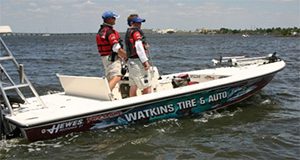
Guides and captains maintaining vessels used for recreational fishing are an important part of coastal economies, but regulations affecting them can be complicated and may differ depending on several factors, including targeted species, number of customers, vessel size, etc. These regulations are often described in multiple locations, since for-hire guides operate at the intersection of multiple state and federal jurisdictions. This 3-page fact sheet written by Elizabeth A. Staugler, Ralph Allen, and Edward V. Camp and published by the UF/IFAS School of Forest Resources and Conservation, Program in Fisheries and Aquatic Sciences summarizes the relevant regulations and requirements.
https://edis.ifas.ufl.edu/fa218
An Overview of Key Soil Nitrogen Cycling Transformations
Although nitrogen (N) is one of the most abundant elements in the biosphere, it is generally at levels that are limiting for optimum plant growth and crop production in Florida soils. To maintain adequate N levels in Florida soils without having detrimental environmental side effects, one must understand and manage N cycling transformations and processes. This new 5-page article, published by the UF/IFAS Department of Soil and Water Sciences, provides an overview of the N cycle by describing key N transformations that result in soils gaining or losing N. The biotic and abiotic processes that govern these transformations are described, as well as practical examples of these transformations in Florida soils. Written by Clayton J. Nevins, Sarah L. Strauss, and Patrick Inglett.
https://edis.ifas.ufl.edu/ss684
Diagnostic Methods for the Comprehensive Health Assessment of the Long-Spined Sea Urchin, Diadema antillarum
This 55-page document contains a wealth of information on the long-spined sea urchin, which is an important animal in coral reef ecosystems. The publication discusses diagnostic methods for Diadema antillarum and provides reporting forms for laboratory and diagnostic work. Written by Ruth Francis-Floyd, Jan Landsberg, Roy Yanong, Yasu Kiryu, Shirley Baker, Deborah Pouder, William Sharp, Gabriel Delgado, Nicole Stacy, Tom Waltzek, Heather Walden, Roxanna Smolowitz, and Greg Beck, and published by the UF/IFAS Veterinary Medicine—Large Animal Clinical Sciences Department, May 2020.
https://edis.ifas.ufl.edu/vm244
Facts about Wildlife Diseases: Bats and Coronaviruses
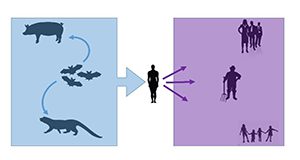
Bats benefit both natural ecosystems and people. Viruses that live in bats can harm people, but transmission of these pathogens from bats to humans can occur only when humans come too close to bats. Recently, misguided attempts to preserve human health have led to persecution of bats. In fact, however, what will keep people healthy is to protect bats and their habitat. This 4-page fact sheet written by Holly K. Ober and Samantha M. Wisely and published by the UF/IFAS Department of Wildlife Ecology and Conservation explains how protecting bat roosts can reduce the likelihood of future zoonotic disease pandemics while also increasing the natural pest reduction services bats provide as they consume insects that cause damage to agronomic crops as well as the mosquitoes that transmit diseases like Zika, dengue, malaria, and chikungunya. Finally, protecting bat roosts keeps bats safely distanced from people, whereas destroying their homes risks the health of both people and bats because it forces bats into closer proximity to people.
https://edis.ifas.ufl.edu/uw473
Antibiotics in Crop Production
This new 5-page article presents an overview of the use of antibiotics in agriculture. Several of the most severe bacterial diseases of tree fruit and other crops are discussed and their integrated management, which includes the use of antibiotics, is described. Antibiotic use for plant disease protection is compared with the use of antibiotics in livestock production, and their future and limitations in plant production are discussed. Written by Leigh Archer, Ute Albrecht, and Pamela Roberts, and published by the UF/IFAS Horticultural Sciences Department.
https://edis.ifas.ufl.edu/hs1366
Yellow-Legged Hornet (suggested common name), Vespa velutina (Lepeletier 1836) (Insecta: Hymenoptera: Vespidae)
The yellow-legged hornet, Vespa velutina (Lepeletier), is a pest of concern outside of its native range. Vespa velutina is native to Southeast Asia and has invaded several regions in Europe, first appearing in France in 2004. As a generalist predator, they are a pest of honey bees and a major concern to many beekeepers. Vespa velutina has not been intercepted in North America, but it is believed to have high invasion potential. This 5-page fact sheet written by Krystal Ashman, Oliver Keller, and Cameron Jack and published by the UF/IFAS Entomology and Nematology Department describes the hornet and explains its live cycle, biology, and some of its predatory strategies.
https://edis.ifas.ufl.edu/in1282
Asian Giant Hornet, Vespa mandarinia Smith (1852) (Insecta: Hymenoptera: Vespidae)
Vespa mandarinia Smith, commonly called the Asian giant hornet, is the largest hornet in the world. Its size and distinctive markings make it easily distinguishable from other Asian hornet species. Not only is the wasp occasionally life-threatening to humans, it can decimate a number of insect colonies, most notably wild and farmed honey bees. Vespa mandarinia is native to Japan and occurs in several countries in Asia. The first Vespa madarinia hornet detected in the United States was in Washington State in 2019. This 5-page fact sheet written by Caitlin Gill, Cameron Jack, and Andrea Lucky and published by the UF/IFAS Entomology and Nematology Department describes the hornet, its biology, its predatory strategies, and its medical significance. The fact sheet also provides some strategies for management of this dangerous and destructive hornet.
https://edis.ifas.ufl.edu/in1281
